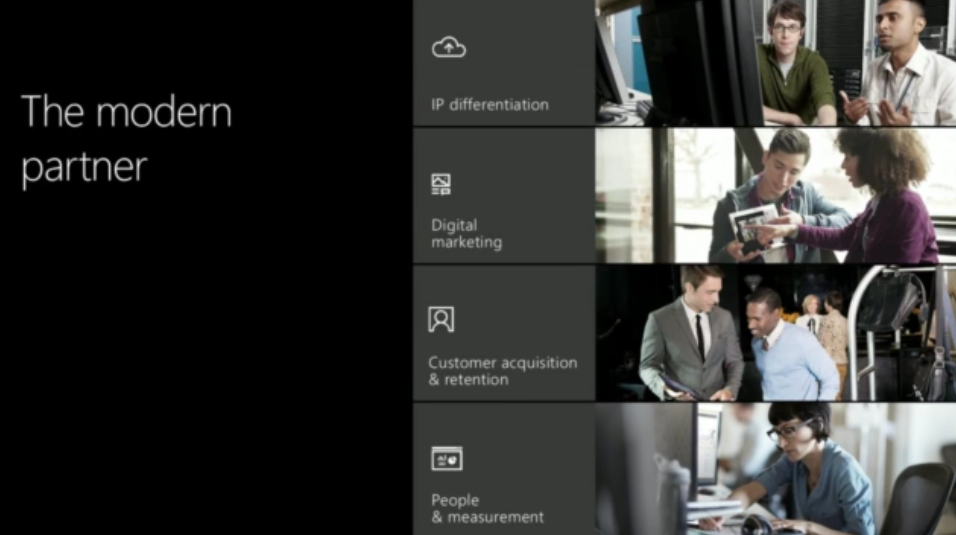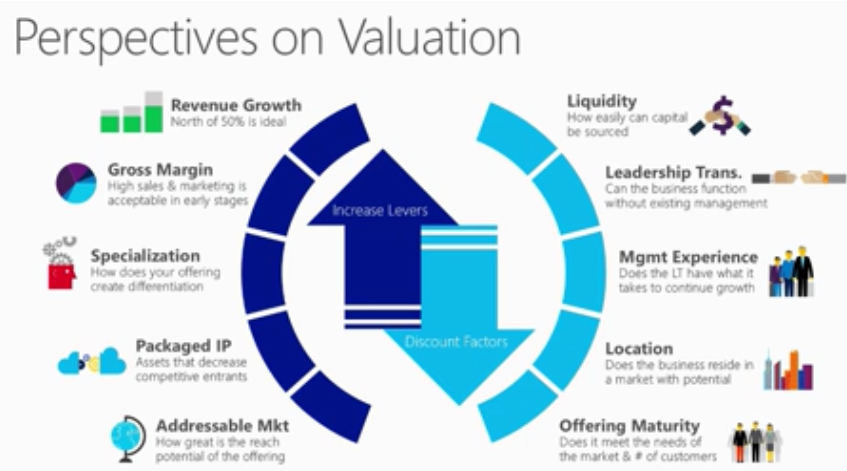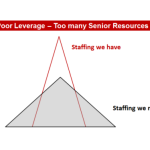Microsoft reveals 2 types of partners: modern & dated. Which one are you?
2 Types of Partners: Modern vs. dated
The modern partners are ones doing more than 50% of their business in cloud and the old hats are those generating far less than 50% of their revenues from the cloud work, revealed Microsoft’s Worldwide Partner Group CVP Phil Sorgen. He has numbers to back this.
Using IDC’s data, he looked across Microsoft’s worldwide partner network and observed that partners doing the bulk of their business in the cloud had 1.4x revenue growth and 1.5x profitability compared to the rest of the industry (Fig 1).
On top of this, IDC’s research found that those with more than 50% of their revenues coming from cloud-work have a company valuation of 5-14% EBITDA. For rest of the industry, the number is 2-4%.
The folks drilling this data worldwide partner network data observed that the partners at the top of the valuation curve (those near 14% higher EBITDA) have four distinct characteristics (Fig 1).
- 1st party IP (Intellectual Property)
- Digital Marketing
- Customer acquisition & retention
- People & measurement
Fig 1-

Let’s dive into each.
1. 1st Party IP
Microsoft says that the number of partners building their own IP is increasing because they’re realizing new revenue streams out of their IP assets. This IP could be a SaaS extension which could be packaged and sold as a subscription service. Or it could be getting your IP integrated into a managed service. It can even be ‘patented repeatable methodologies’ that extends a partner’s project services work.
Example of Power Objects
Power Objects turned their services business into a multimillion dollar subscription-based business in two years. They’ve historically sold CRM and now they are making add-on to sell as value-added service. They spun-off the CRM add-on as separate subscription service that included Microsoft licensing entitlement, training, support, and a handy mixture of 20+ add-ons that they had created. They branded the product as “POWER PACK”. Their business grew by 370% in the past two years.
Phil Sorgen observed that public cloud has made these products more discoverable over the internet. The bottom line is that if you are establishing annuity business with longer term contracts, first party IPs can be used to extend the Microsoft cloud platform and grow your business.
2. Digital Marketing
The modern partners are getting new accounts and customers through digital marketing. They are doing so by establishing a digital profile, rather than merely focusing on SEO or SEM (search engine marketing). They are using assets like social, reputation engines and peer review to establish credibility.
Sorgen shared that there are two key trends at play here. One is the role that LoB influencers are playing in new IT projects. IDC predicts that LoB executives will play a role in 80% of all the net new IT investments in 2016. The 2nd change is how companies are finding new solutions. Customers now search online or do a peer review before even involving a partner or vendor. So, it is important that your digital profile connects you to the customers/buyers you don’t have a direct relationship with.
A key example of a Microsoft partner investing in digital marketing is Palmetto Technology. The capability to digitally market your firm exposes companies to new competitors but it exponentially increases their potential target market.
3. Customer Acquisition & Retention
The 1st party IPs and digital connections change the way you acquire customers. It has to be an integrated sales & marketing engine. CCP Soft is an example of such change in customer acquisition tactics. They developed a managed service and delivered it as a shared service where new leads were greeted by a virtual assistant and immediately redirected to dedicated engineers and then onto the sales staff. This allowed CCP to quickly engage the new prospects and turn them into warm leads.
4. People & Measurement
The partners leveraging cloud for their business growth have realigned the internal measurements also. One of the partners Crayon shared that they went from a quota based model to a ‘portfolio percentage growth’ model.
So, partners can start benchmarking against these four characteristics that modern cloud-centric partners have adopted.
Time to take stock
Here’s a tool that Microsoft developed for partners to self-assess their cloud-readiness. It is called the Microsoft SureStep Profitability Benchmark Tool. Take the assessment to see what your current performance is versus the anticipated performance.





